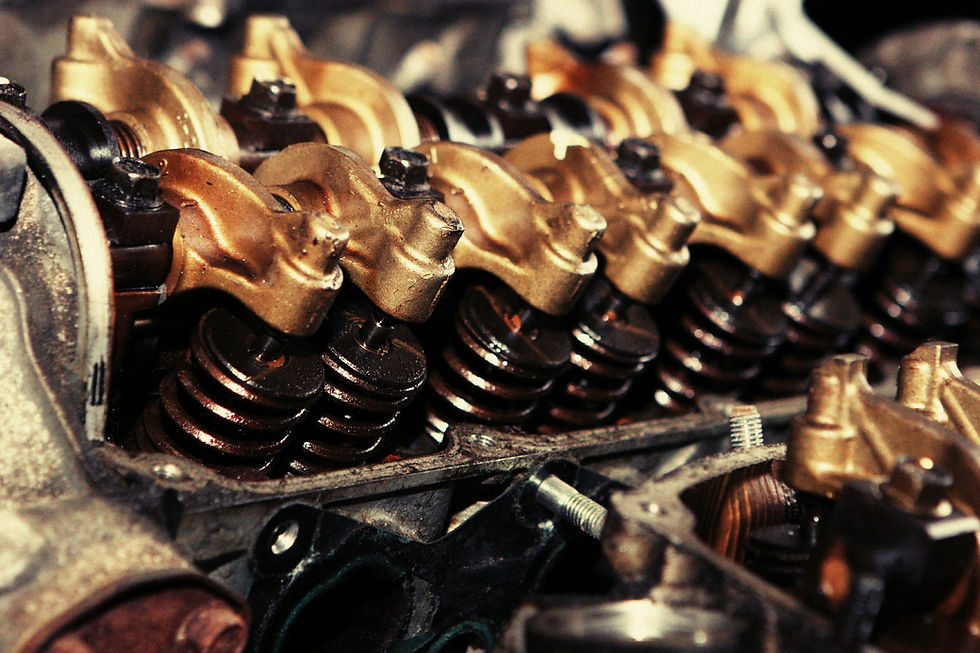Reading an oil dipstick
- Autolast Ghana

- Dec 8, 2022
- 4 min read
Updated: May 2, 2024

You must add at least one quart of oil if the oil does not fill the spaces between the dipstick's marks or holes. You must add oil right away if the dipstick does not display an oil level. Depending on your car's age, engine type, total miles, and driving circumstances, you need add different amounts of make-up oil. Your indicator of very high oil consumption is the dipstick. Real worry arises when there is one quart every 1,000 km (0.95 liters for every 1,600 kilometers). If the issue worsens to one quart every 500 miles, it's time to start planning an overhaul (800 kilometers).
If your dipstick frequently shows low engine oil levels, you could have a leak. There are several ways to check for oil leaks, which is crucial since a leak might ruin the car's engine. If there are black pools under your car, the oil pan may be slowly leaking oil as a consequence. An engine oil leak may be clearly indicated by engine smoke or the smell of burning oil. Another effect of an oil leak can be the engine overheating.
Why Is a Change of Oil Important?
Your car's engine oil is an important component. Your car's lifeline is oil. It lubricates engine parts to keep them from grinding and to keep the engine cool. There are several ways that engine oil benefits the engine. By keeping the engine free of debris, it aids in defending it and safeguarding the engine's functionality. Oil improves the performance of the fuel by reducing wear and friction. Last but not least, it disperses heat from one section of the engine to another.
How to read the oil dipstick on your vehicle
You would need to insert the dipstick a second time after cleaning it. You then take it out again to give it a close inspection. The oil level in the engine should be indicated by holes, letters, or lines on your vehicle's dipstick.
Leak detection for oil If your dipstick frequently shows low engine oil levels, you could have a leak. There are several ways to check for oil leaks, which is crucial since a leak might ruin the car's engine. If there are black pools under your car, the oil pan may be slowly leaking oil as a consequence.
An engine oil leak may be clearly indicated by engine smoke or the smell of burning oil. Another effect of an oil leak can be the engine overheating.
How should a dipstick with holes be read?
Of course, some dipsticks employ holes instead of lines. The only thing you need to know to read a dipstick with four holes is that the topmost hole denotes the "full" mark while the oil is hot, and the hole directly underneath it denotes the "full" mark when the oil is cold. Similar to this, while the oil is hot, the bottom hole represents the "low/add" mark, and when the oil is cold, the highest and lowest holes represent the "low/add" mark.
To effectively maintain your automobile, you must understand how to read an oil dipstick. Checking your oil just takes a few minutes but running out of oil can seriously harm your engine. The time spent studying how to interpret an oil dipstick is worthwhile.
What you should do is:
Park firmly on the ground.
You always place liquid measuring glasses on a flat surface when you're cooking. If not, the inside liquid sloshes sideways and provides an inaccurate measurement. Consider your car's oil in the same manner.
You won't obtain an accurate measurement if your automobile isn't on level ground. To get a reliable reading, make sure your vehicle is positioned on a level surface.
Track down the dipstick
To reach the oil dipstick, shut off the engine and then raise the hood. If you need assistance locating the dipstick in your engine compartment, see your owner's handbook.
Even though it's typically advised to check the oil only while the engine is cold, certain contemporary vehicles don't require it. Check your owner's handbook once again and abide by any instructions provided by the manufacturer.
Take away the dipstick
A loop is located on top of the long, wavy piece of metal that serves as the engine oil dipstick. Have a paper towel or cloth handy and fully remove the dipstick.
Clean All That off
When you initially pull out the dipstick, it won't give you an accurate reading since oil splashes around while you're driving. Instead, clean the dipstick from the handle to the tip using that cloth or piece of paper. Reinstall it now, being cared to do so completely.
Read your oil now
Take a closer look after removing the dipstick a second time. There are measuring lines down towards the tip that show the oil level from full too low. These locations are often marked by a F and an L, but other times you might only notice two tiny holes or a string of lines. They all show if your oil is full or low, respectively.
Is oil necessary?
You're OK to go as long as the oil level is between the F and L marks since it's crucial to avoid overfilling your car's oil. You'll need to add oil to your automobile if it's extremely close to the L or below it, else you run the danger of running out.
Do You Need to Change Your Oil?
Fresh oil has a golden hue and streams smoothly, as you'll see. It progressively grows thicker and darker as it passes through your engine. It's acceptable for the oil to appear different from how it did when it was brand-new, but if it's pitch-black, grit-filled, or excessively sticky, it's time to change the oil.
Even simpler than changing the oil in your automobile is checking the oil level. Make it a part of your routine maintenance checklist to protect yourself from potential engine damage.
#OilDipstick #EngineMaintenance #CheckOilLevel #CarCare #MechanicTips #DIYAuto #OilChange #VehicleMaintenance #CarRepair #AutoTips




Comments